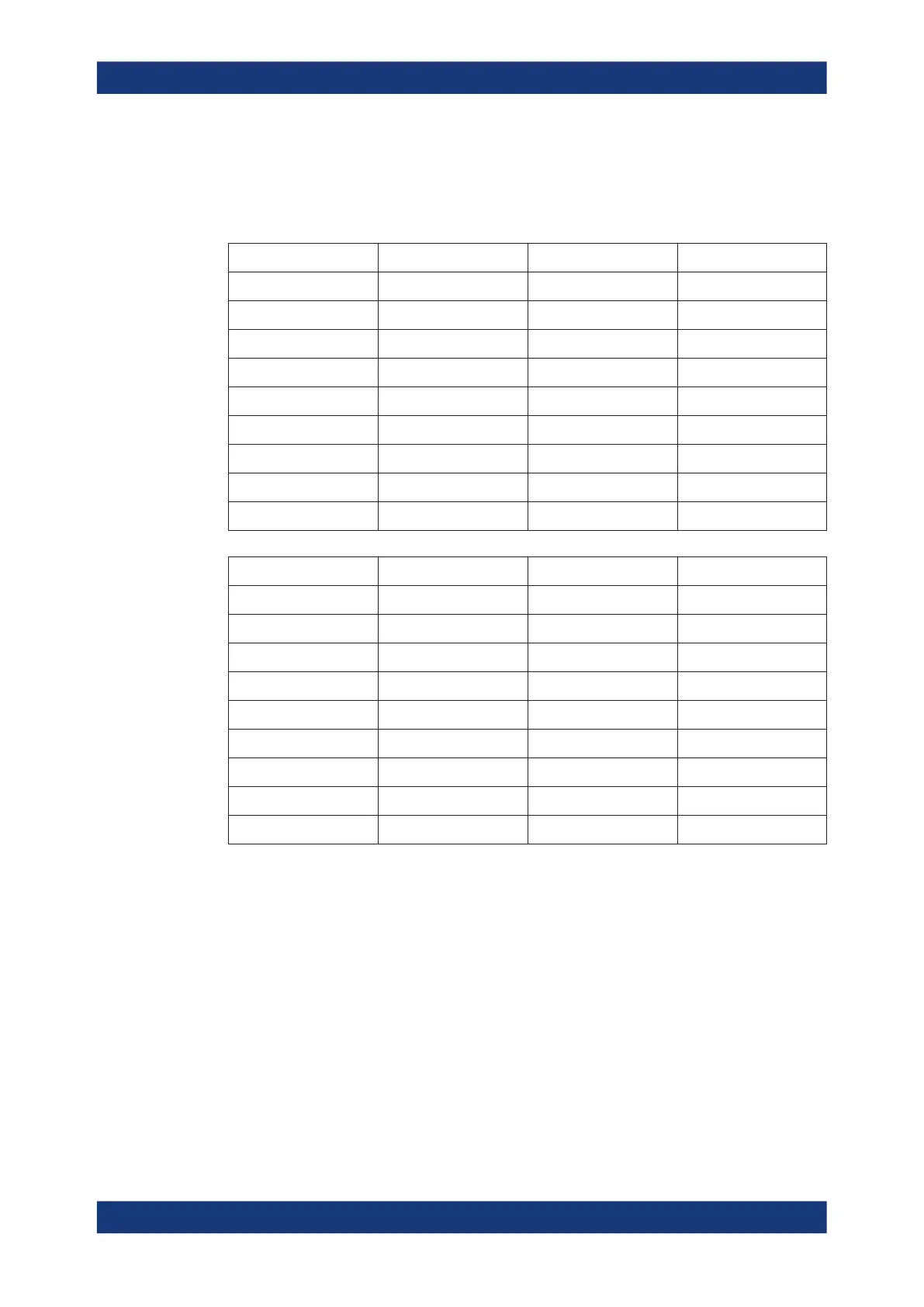Concepts and features
R&S
®
ZNB/ZNBT
193User Manual 1173.9163.02 ─ 62
Example:
The following examples show minimal port assignments for a Full 9-Port calibration
using a four-port calibration unit:
Table 4-11: Full 9-port calibrations: star-shaped optimum solution
Test Port Assignment 1 Assignment 2 Assignment 3
1 Cal Unit Port 1 Cal Unit Port 1 Cal Unit Port 1
2 Cal Unit Port 2 - -
3 Cal Unit Port 3 - -
4 Cal Unit Port 4 - -
5 - Cal Unit Port 2 -
6 - Cal Unit Port 3 -
7 - Cal Unit Port 4 -
8 - - Cal Unit Port 2
9 - - Cal Unit Port 3
Table 4-12: Full 9-port calibrations: line-shaped optimum solution
Test Port Assignment 1 Assignment 2 Assignment 3
1 Cal Unit Port 1 - -
2 Cal Unit Port 2 - -
3 Cal Unit Port 3 - -
4 Cal Unit Port 4 Cal Unit Port 4 -
5 - Cal Unit Port 1 -
6 - Cal Unit Port 2 -
7 - Cal Unit Port 3 Cal Unit Port 3
8 - - Cal Unit Port 1
9 - - Cal Unit Port 2
4.5.6 Scalar power calibration
The purpose of a scalar power calibration is to ensure accurate source power levels
and power readings at a particular position (calibration plane) in the test setup. Scalar
power calibration is different from the system error correction described in Chapter 4.5,
"Calibration", on page 162.
A power calibration is required for accurate measurement of wave quantities or ratios
(see section Chapter 4.1.5, "Data flow", on page 98). For best accuracy, choose a cali-
bration method according to the table below.
Calibration

